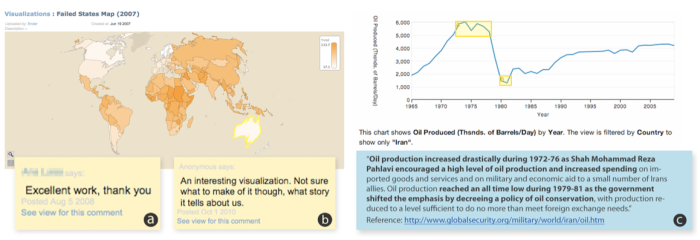ACM Human Factors in Computing Systems (CHI), 2012

Comments on social data analysis on sites like Many Eyes (a,b) often add little value for analysts. We show that crowd workers can reliably produce high-quality explanations (c) that analysts can build upon as part of their broader analyses.
Abstract
Web-based social data analysis tools that rely on public discussion to produce hypotheses or explanations of patterns and trends in data rarely yield high-quality results in practice. Crowdsourcing offers an alternative approach in which an analyst pays workers to generate such explanations. Yet, asking workers with varying skills, backgrounds and motivations to simply “Explain why a chart is interesting” can result in irrelevant, unclear or speculative explanations of variable quality. To address these problems, we contribute seven strategies for improving the quality and diversity of worker-generated explanations. Our experiments show that using (S1) feature-oriented prompts, providing (S2) good examples, and including (S3) reference gathering, (S4) chart reading, and (S5) annotation subtasks increases the quality of responses by 28% for US workers and 196% for non-US workers. Feature-oriented prompts improve explanation quality by 69% to 236% depending on the prompt. We also show that (S6) pre-annotating charts can focus workers’ attention on relevant details, and demonstrate that (S7) gener- ating explanations iteratively increases explanation diversity without increasing worker attrition. We used our techniques to generate 910 explanations for 16 datasets, and found that 63% were of high quality. These results demonstrate that paid crowd workers can reliably generate diverse, high-quality explanations that support the analysis of specific datasets.
Video




